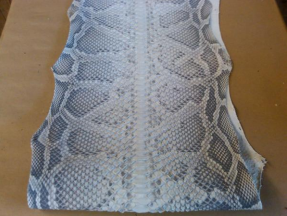 In the high-fashion industry, accessories such as handbags are an intensely competitive market for designers. For many top fashion houses, handbags are a lucrative business, one that keeps them very busy. In fact, some fashion houses have waiting lists for their handbags that very wealthy clients will be on for years before getting their handbag.
In the high-fashion industry, accessories such as handbags are an intensely competitive market for designers. For many top fashion houses, handbags are a lucrative business, one that keeps them very busy. In fact, some fashion houses have waiting lists for their handbags that very wealthy clients will be on for years before getting their handbag.
In a field where clients are willing to wait for years to get their perfect handbag, it’s important to have a product that stands out for the right reasons, one that exceeds the client’s expectations. A great way to start creating the perfect handbag to please the most demanding clients is to use the very best materials for that handbag.
One way to create a truly unique look while making sure that your clients know that you’re using the best materials for a handbag design is to use exotic leathers in your handbags. With this in mind, we here at Pan American Leathers have assembled a list of some of our favorite exotic leathers to use in handbags.
Top Handbag Leather #1: American Alligator Skin
 Alligator leather is a very popular choice for handbags; it's flexible, distinctive, and easy to work with. Of the different crocodilian species used for leather, the American alligator is perhaps the most luxurious and easiest to work with.
Alligator leather is a very popular choice for handbags; it's flexible, distinctive, and easy to work with. Of the different crocodilian species used for leather, the American alligator is perhaps the most luxurious and easiest to work with.
The hide of the American alligator has very little calcium. This makes American alligator skin much less bony in comparison to other crocodilian species. Because there is so little calcium in the alligator hide, the hide is flexible and easier to dye. When you want a solid, even color in your handbag, alligator leather is your go-to material.
With the flexibility of alligator hide, it makes for an ideal material for handbags. Why? Because, over time, handbags will be repeatedly exposed to both light and severe bending from everyday use. With repeated flexing, a more rigid skin will begin to show crease marks. However, alligator skin, being more pliable than other crocodilian hides, will not show crease marks as easily. This allows alligator hide to continue looking like new for longer with less maintenance.
Top Handbag Leather #2: Python Skin
 A native of Southeast Asia, the python is a reptile that needs no introduction. Gathered from both the wild and from farms, the python is a popular choice for many different high fashion and design projects. Part of the reason for this is the size that python skins can grow to: small skins are 25 cm wide and 1.5 meters long, while the largest skins can be 60 cm or more in width and as much as 6.5 meters long. In short, python skin is easily large enough to meet the panel size demands of a large handbag.
A native of Southeast Asia, the python is a reptile that needs no introduction. Gathered from both the wild and from farms, the python is a popular choice for many different high fashion and design projects. Part of the reason for this is the size that python skins can grow to: small skins are 25 cm wide and 1.5 meters long, while the largest skins can be 60 cm or more in width and as much as 6.5 meters long. In short, python skin is easily large enough to meet the panel size demands of a large handbag.
Because these skins come from farms as well as the wild, it is often easier to find the kind of large, grade I skins needed for items with big, open panels such as handbags. This makes the python a superior choice compared to the anaconda, which is taken only from wild sources which makes getting large, pristine skins incredibly difficult.
The primary drawback with the python is that in some markets, such as California, you cannot trade in items made from python skins.
With python skins, you have a choice of whether or not to use the natural skin patterns of the python in your project, or to bleach the skin and dye it to make it a consistent, even color. While it may be slightly more difficult to use the natural scale patterns in a manner that creates a perfectly polished look, it can be well worth the effort for the uniqueness and the added authenticity a natural finish provides. On the other hand, using a bleached and dyed skin may make it easier to match the handbag to a specific collection of fashion wear.
To learn more about python skins, check out our Guide to Python Skin.
Top Handbag Leather #3: Caiman Skin
Of the exotic leathers on this list, caiman skin is one of the most cost-effective, making it great for a larger product launch by comparison. While more rigid than alligator leather, caiman skin is still a top-rate material for high-fashion accessories such as handbags.
Caiman skin comes from farm-raised sources, which helps to ensure that there are more grade I skins available on the market than skins that only come from wild sources. The largest commonly available caiman skins are roughly 40 cm in size, making caiman skins better suited for small to mid-size handbags.
With caiman skin's natural rigidity, these hides are particularly well-suited for use in hard-case type handbags.
To learn more about how you can work exotic leathers into your next handbag project, contact Pan American Leathers today!



